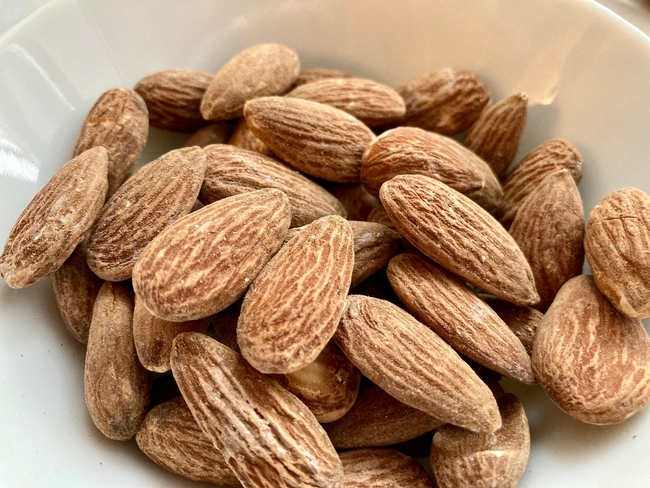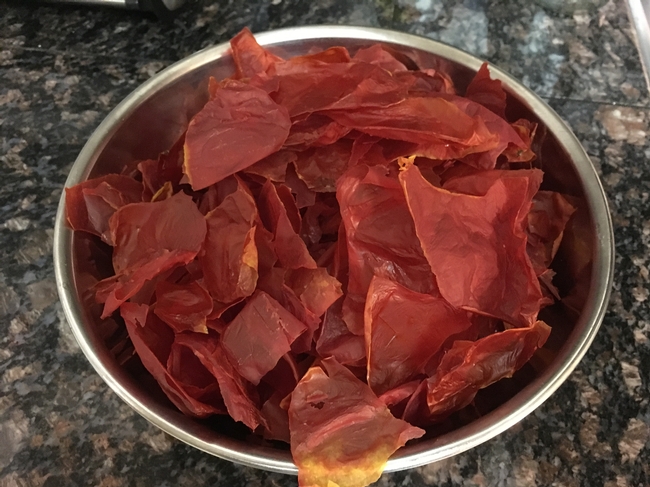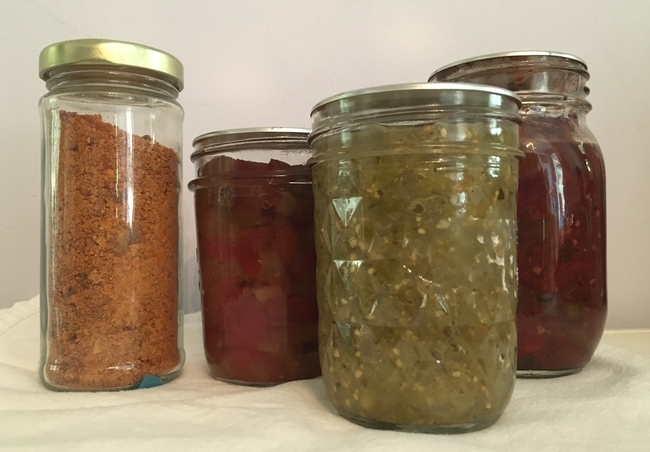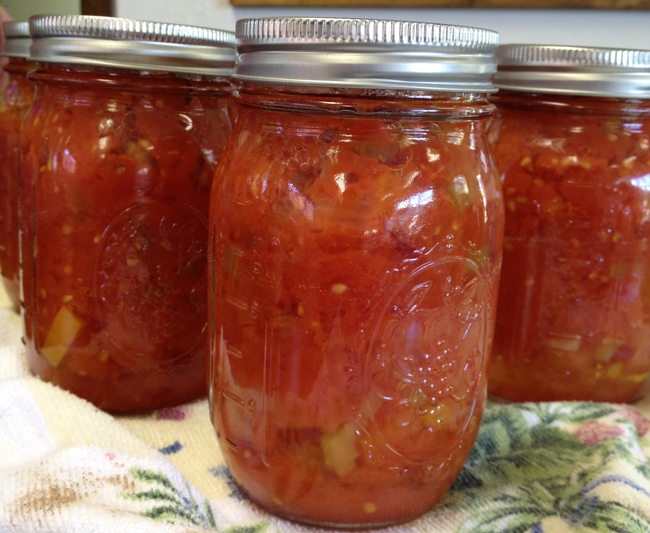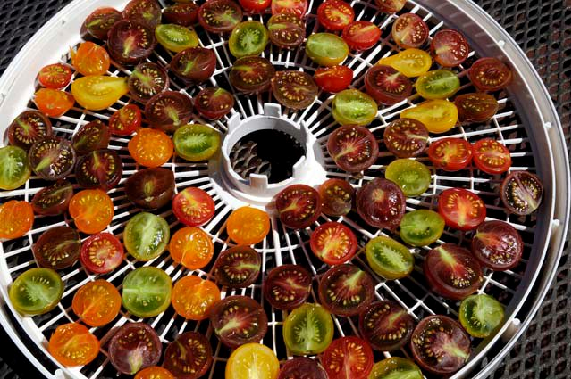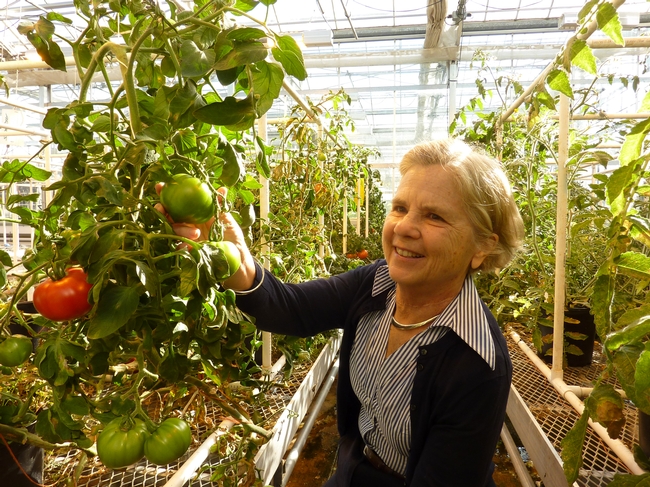Posts Tagged: Tomatoes
‘Containergeddon’ at ports cost California farmers $2.1 billion in exports
New research estimates economic losses due to congestion, inefficiencies
Between wildfires, drought, a trade war and the COVID-19 pandemic, the last few years have been hard on California farmers. But recent research by agricultural economists from UC Davis and the University of Connecticut suggests that economic losses to California agriculture from recent supply chain disruptions may have an even greater economic impact.
In an article titled “‘Containergeddon' and California Agriculture,” researchers estimate that there was a 17% decline in the value of containerized agricultural exports between May and September 2021, resulting from recent port congestion. This amounts to around $2.1 billion in lost foreign sales, which exceeds losses from the 2018 U.S.-China trade war.
By the peak of the disruption in September 2021, nearly 80% of all containers leaving California ports were empty – about 43% fewer filled containers leaving California's ports than there were prior to the pandemic. And since 40% of filled shipping containers leaving California's ports are filled with U.S. agricultural products – around a third of which are from California – farmers in the state experienced significant lost export opportunities.
By September 2021, there were around 25,000 fewer containers filled with agricultural products leaving California ports than there were in May 2021. Processed tomatoes, rice, wine and tree nuts saw the sharpest average trade declines.
“We calculated California tree nut producers lost about $520 million,” said Colin Carter, UC Davis Distinguished Professor of agricultural and resource economics. “This was followed by wine with a loss of more than $250 million and rice with about $120 million lost.”
During the pandemic, an increase in household savings led to increases in consumer spending, with many of these additional goods being imported from Asia. California ports were overwhelmed by the added shipping containers coming in from Asia. At times, bottlenecks at Southern California ports left more than 80 vessels waiting off the coast to unload. Docks and warehouses ran out of space and the turnaround time for shipping containers nearly doubled.
Increased U.S. demand for imported goods from Asia also led to increased demand for empty shipping containers in Asia. Prior to the pandemic, freight rates for shipping containers from Shanghai to Los Angeles were already higher than the return trip from Los Angeles, but this gap widened significantly after COVID-19. By September 2021, the fee to ship a 40-foot container from Shanghai to Los Angeles had increased sixfold to $12,000 – while the return trip from Los Angeles was only $1,400.
The high prices for containers from Asia, coupled with shipping delays from the high volume of imported goods entering California ports, made it more profitable for shippers to return containers to Asia empty, rather than waiting at the ports to have them loaded with U.S. exports for the return trip.
“If port inefficiencies persist, the ramifications for California agriculture will extend beyond the immediate loss of foreign sales, as importers begin to view California as an unreliable supplier of agricultural products,” Carter said.
To learn more about the supply chain disruptions at California ports, and their effect on California agriculture, read the full article by Colin Carter (Distinguished Professor in the Department of Agricultural and Resource Economics at UC Davis), Sandro Steinbach, and Xiting Zhuang (assistant professor and Ph.D. student, respectively, both in the Department of Agricultural and Resource Economics at the University of Connecticut): “‘Containergeddon' and California Agriculture,” ARE Update 25(2): 1–4. UC Giannini Foundation of Agricultural Economics, online at https://giannini.ucop.edu/filer/file/1640021835/20297/.
ARE Update is a bimonthly magazine published by the Giannini Foundation of Agricultural Economics to educate policymakers and agribusiness professionals about new research or analysis of important topics in agricultural and resource economics. Articles are written by Giannini Foundation members, including University of California faculty and Cooperative Extension specialists in agricultural and resource economics, and university graduate students. Learn more about the Giannini Foundation and its publications at https://giannini.ucop.edu/.
Too many tomatoes?
If you also found a silver lining to staying/working at home this summer by planting and tending to your garden, did your wish for a bumper crop of tomatoes come true? What happens if your tomato plants are prolific producers?
Preserve those tomatoes!
The easiest way to preserve tomatoes is to freeze them. You don't need to blanch them, you don't need to peel them. Just rinse, dry, core, and put them on a small tray or plate in the freezer. Once frozen solid, move them to a freezer bag, removing as much air from the bag as possible before closing. Pull the bag out of the freezer when you're ready to use the tomatoes. To peel, let them thaw just a little and then run each tomato under warm water to slip off the skins. It's that easy. (They won't have the texture of a fresh tomato, but they'll be perfect to make a fresh sauce for dinner.)
Don't throw away those skins! Or soft tomatoes. If you have a dehydrator, lay tomato skins on the tray, sprinkle with your favorite spice mix (garlic salt works well), and dry until crispy to make a tomato skin chip. Some heirloom tomato skins are bursting with flavor. Or instead of making chips, toss tomato skins and soft tomatoes into a freezer bag until you fill the bag. Thaw and puree the bag's contents and dry the mixture on your dehydrator tray as a crisp leather. Grind up the leather to make a tomato powder to use for camping soup mixes and dehydrated salsa mix. Sprinkle tomato powder on scrambled eggs for tomato flavor without the extra moisture or add to meatloaf, burgers or soups to enhance flavor. Get creative!
If you're a canner, there are lots of options. Many people don't think of tomatoes as a basis for jam or jelly, but with the right spices and some sugar, the flavor profile changes significantly. I served Spiced Tomato Jam in a blind taste test with third-graders a few years ago and they guessed it was apple pie and pumpkin pie because of the nutmeg, cinnamon and allspice. It's delicious!
A family favorite is Tomato Apple Chutney. This savory spread is a collection of tomatoes, apples, onions, raisins, garlic, cucumber, red bell peppers, a little sugar and spices. I like to mix it with mayonnaise for a sandwich spread. The first time I made it my husband and I ate sandwiches for lunch and dinner three days in a row. It is one of the first red tomato products I can each summer.
Another family favorite is Roasted Eggplant and Pepper Puttanesca Sauce. The combination of roasted plum tomatoes, eggplant, onions and red peppers with capers, olives, spices, balsamic vinegar and wine make a chunky pasta sauce that smells fabulous when you open the jar. I usually make 3-4 batches and enjoy them all year.
My pantry staple is plain crushed tomatoes. I add spices when I make a meal, cooking them down, adding tomato paste (remember the tomato powder?) and dried veggies. Each jar of crushed tomatoes can become part of a unique meal. The main thing to remember is to add acid to each jar before filling it to ensure there's enough acidity to make the tomatoes a high acid food and safe to can in a steam canner or boiling water canner. I normally use bottled lemon juice, but this year I'm trying a few jars with cider vinegar; rumor has it that after being stored for several months the vinegar flavor mellows and enhances the flavor. I'll label the jars to identify the acid used.
I learned a great tip at one of our public classes a couple of years ago. Often when canning tomatoes, there's watery liquid at the bottom of the cook pot. Don't throw out the tomato water! You can jar and process it with the rest of your crushed tomatoes. Use the tomato water to cook couscous, quinoa, rice or as the liquid in a soup.
This is the first year I've actually put my garden in on time and shouldn't have plants loaded with green tomatoes right before the first freeze. If I do, I'll be thrilled because I'll make Green Tomato Salsa Verde – it's delicious! (It ranks up there with Tomatillo Salsa; I've already made three double batches and plan to make more.) Green tomatoes are more acidic than ripened tomatoes and you can use them in place of red tomatoes in any canning recipe, following standard acidification methods.
I just picked a cherry tomato off the potted plant on my back patio that is purposely within easy snacking distance from my kitchen. If I get too many to eat within a couple of days I'll cut them in half and dehydrate them. The result is as good as candy.
So many tomato possibilities! If you want more ideas, contact the UC Master Food Preserver online help line at Ask a Master Food Preserver.
Visit our website at http://mfp.ucanr.edu/to watch a variety of preservation videos from Cooperative Extension offices around the country, explore recipes, and find out more about the UC Master Food Preserver Program.
Heirloom tomatoes are a delicious treat and provide a market niche for small growers
In recent years, heirloom tomatoes have become a farm-to-table favorite.
Some consumers are willing to pay a hefty price at trendy restaurants, farmers markets, roadside stands, and even local grocery stores for tomatoes with irregular shapes, vivid colors and rich tomato flavor.
The consumer demand presents an opportunity for small-scale farmers, and a challenge.
“It's not easy to grow heirloom varieties,” said Margaret Lloyd, the UC Cooperative Extension small-scale farm advisor for Yolo, Solano and Sacramento counties. “They often have less disease resistance, are lower yielding and cannot tolerate as much stress as improved modern varieties.”
When Lloyd joined UCCE last summer, she began visiting small-scale producers in the counties she serves.
“I realized very quickly how important fresh market tomatoes are to these growers,” Lloyd said.
Because she holds a doctorate degree in plant pathology from UC Davis, Lloyd is well-positioned to begin her research program with a small tomato grafting project on UC Davis farmland. Her idea is grafting the particularly delicious heirloom varieties onto tomato roots that are resistant to soil-borne diseases.
“Grafting is an old technology,” Lloyd said. “It works in the same way we graft fruit trees and grapevines onto favorable rootstocks. Vegetable grafting has also been done for years.”
Lloyd said the process is simple and an individual can easily learn to graft tomatoes. But to do so cost effectively with the quality and success rate necessary for economically viable production, it may make most sense to work with a commercial nursery.
Lloyd is conducting a quarter-acre field trial with the three most common heirloom varieties – Brandywine, Cherokee purple and Marvel stripe – plus the yellow-hued Sun Gold cherry tomato and a non-heirloom salad tomato, Charger. Several growers in the area have also planted them in their commercial operations.
In addition to collecting data from the trial that will help small farmers decide whether grafted tomatoes make sense for their operations, Lloyd and her research associates will harvest many bushels of fresh tomatoes from the plots. Some will be sold at the UC Davis farm store to help support the research, and as for the rest, “We're definitely going to eat them,” Lloyd said.
“I enjoy them raw with olive oil, salt, vinegar and a little basil,” she said.
UC Davis tomatoes provide year-round healthful eating for college students
At the same time, chefs and food buyers at universities, particularly the University of California, are selecting for high-quality fruits and vegetables, produced locally and sustainably. Universities with strong food sustainability programs are rightfully proud of what they're doing to educate students about food production, health, and nutrition. UC Davis Dining Services prioritizes the purchase of locally grown food (ideally within a 50-mile radius of campus). Most University of California campuses have similar programs.
At UC Davis, fresh roma tomatoes are picked each August from the 300-acre Russell Ranch, part of the campus's Agricultural Sustainability Institute, then processed within hours by campus Dining Services to provide year-round tomato sauce for pizza, pasta, and ratatouille. All told, 10,000 pounds of tomatoes are processed during a two-week period in August. About 29 percent of the total food served in the campus's residential dining halls is from local, organic or sustainable sources.
The tomatoes grown at Russell Ranch are part of a long-term academic research project that examines factors such as farming methods, irrigation needs, crop rotations, yield, and nutritional content. At the end of the growing season, some of the many tons of tomatoes are purchased by Dining Services at market value.
Emma Torbert, an academic coordinator at the UC Davis Agricultural Sustainability Institute, noted, “Connecting the food system to the research is really interesting. A lot of times there is confusion about where our food is coming from. The more people are educated, the more educated decisions they can make.”
Many UC Davis faculty and staff are so impressed with the food choices at the dorms that they purchase individual meal tickets and enjoy lunches made with the campus-grown tomatoes, herbs, and other vegetables, all of which are part of the daily food array. Public dinners are also offered periodically at the dorms so that community members can sit amongst students to taste and learn about the sustainability programs in the dorms.
Additional Information:
- Video: Farm to Table, UC Davis Tomatoes; 2010
- Slide show of this year's UC Davis tomato harvesting and processing system; 2014
- Sustainable Foodservice Progress Report 2014, UC Davis Dining Services
- Two videos of UC Davis students who work at the Student Farm to produce food, including one on tomato sauce production
- “Tomatoes: Safe methods to store, preserve, and enjoy.” UC Agriculture and Natural Resources, free publication
Discovery could deliver vintage flavor to a tomato near you
People often complain about grocery store tomatoes, saying they’re too hard and don’t have the flavor we remember from the days of old. And we thought we knew why - because the millions of tons of tomatoes harvested in the United States and beyond have to be picked before they’re fully ripe and juicy in order to survive being shipped long distances. What’s more, many shoppers store their tomatoes in the fridge, which destroys both their flavor and texture.
But guess what? It’s not just how tomatoes are grown, harvested and stored that affect their flavor. A research team led by Ann Powell, a biochemist in the UC Davis Department of Plant Sciences, has discovered a gene mutation that diminishes a tomato’s flavor even if the fruit is picked ripe and stored well. The finding, which was reported in the June 29 issue of the journal Science, identifies a gene that was unknowingly bred out of modern cultivated tomatoes and plays a vital role in producing the sugars and aromas that make heirloom tomatoes so tasty.
The news is unexpected and encouraging, because now breeders have the genetic information they need to create modern varieties suited for large-scale harvest and shipping with all the flavor of more delicate heirloom varieties.
“Now that we know that some of the qualities that people value in heirloom tomatoes can be made available in other types of tomatoes, farmers can have access to more varieties of tomatoes that produce well and also have desirable color and flavor traits,” Powell said.
It takes awhile to breed a new tomato variety, so don’t expect to taste the results anytime soon. But Powell and her team’s discovery is a huge first step. Tomato lovers can also be grateful for C.M. Rick Tomato Genetics Resource Center at UC Davis, home to a vast collection of mutant and wild species of tomatoes which provides the genetic diversity scientists and breeders need to recapture the flavor of old.
You can read more about the study here.
You can access the Science article here.
You can learn more about the C.M. Rick Tomato Resource Center here.



